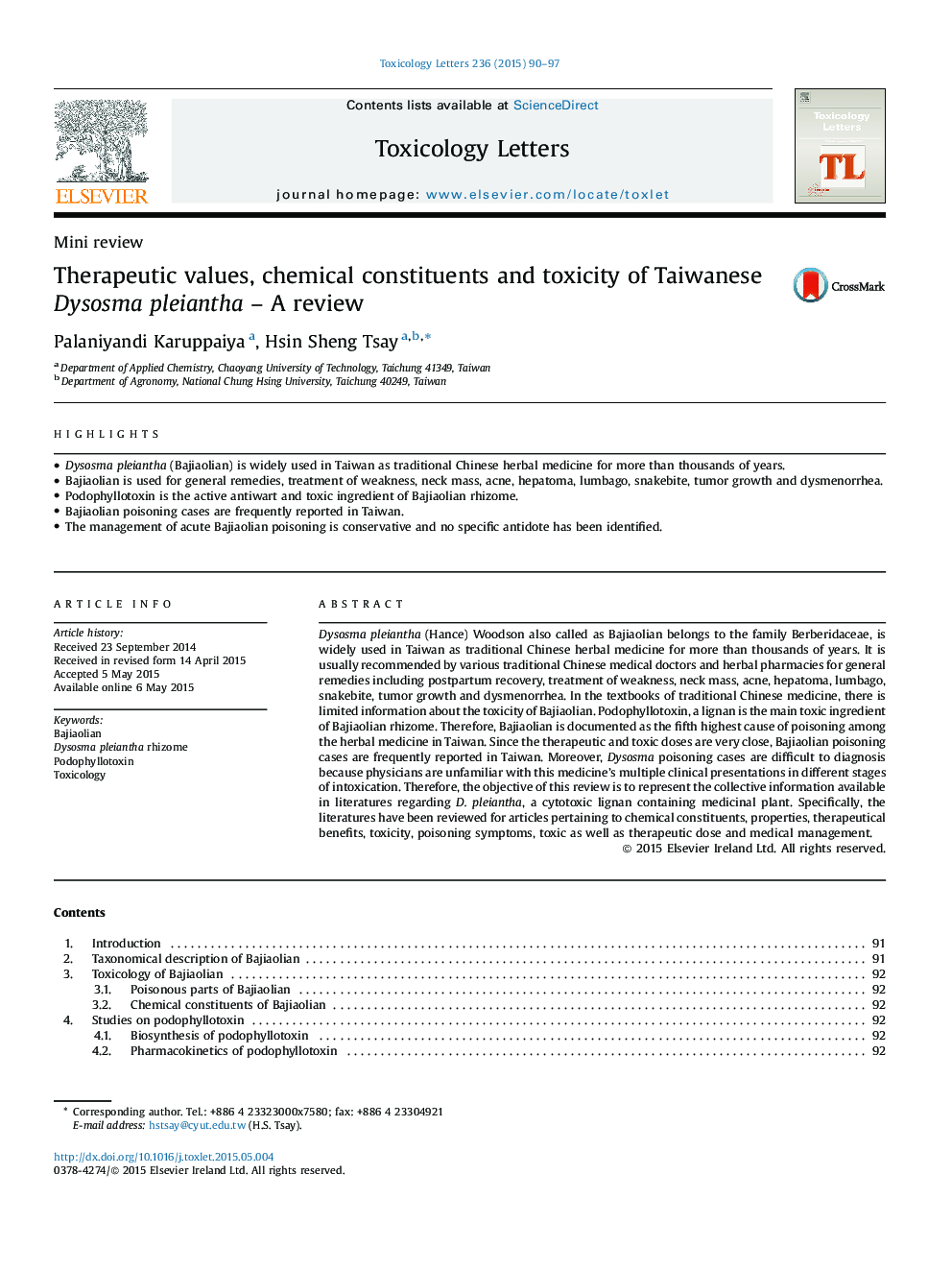| کد مقاله | کد نشریه | سال انتشار | مقاله انگلیسی | نسخه تمام متن |
|---|---|---|---|---|
| 2598655 | 1133143 | 2015 | 8 صفحه PDF | دانلود رایگان |

• Dysosma pleiantha (Bajiaolian) is widely used in Taiwan as traditional Chinese herbal medicine for more than thousands of years.
• Bajiaolian is used for general remedies, treatment of weakness, neck mass, acne, hepatoma, lumbago, snakebite, tumor growth and dysmenorrhea.
• Podophyllotoxin is the active antiwart and toxic ingredient of Bajiaolian rhizome.
• Bajiaolian poisoning cases are frequently reported in Taiwan.
• The management of acute Bajiaolian poisoning is conservative and no specific antidote has been identified.
Dysosma pleiantha (Hance) Woodson also called as Bajiaolian belongs to the family Berberidaceae, is widely used in Taiwan as traditional Chinese herbal medicine for more than thousands of years. It is usually recommended by various traditional Chinese medical doctors and herbal pharmacies for general remedies including postpartum recovery, treatment of weakness, neck mass, acne, hepatoma, lumbago, snakebite, tumor growth and dysmenorrhea. In the textbooks of traditional Chinese medicine, there is limited information about the toxicity of Bajiaolian. Podophyllotoxin, a lignan is the main toxic ingredient of Bajiaolian rhizome. Therefore, Bajiaolian is documented as the fifth highest cause of poisoning among the herbal medicine in Taiwan. Since the therapeutic and toxic doses are very close, Bajiaolian poisoning cases are frequently reported in Taiwan. Moreover, Dysosma poisoning cases are difficult to diagnosis because physicians are unfamiliar with this medicine’s multiple clinical presentations in different stages of intoxication. Therefore, the objective of this review is to represent the collective information available in literatures regarding D. pleiantha, a cytotoxic lignan containing medicinal plant. Specifically, the literatures have been reviewed for articles pertaining to chemical constituents, properties, therapeutical benefits, toxicity, poisoning symptoms, toxic as well as therapeutic dose and medical management.
Journal: Toxicology Letters - Volume 236, Issue 2, 16 July 2015, Pages 90–97